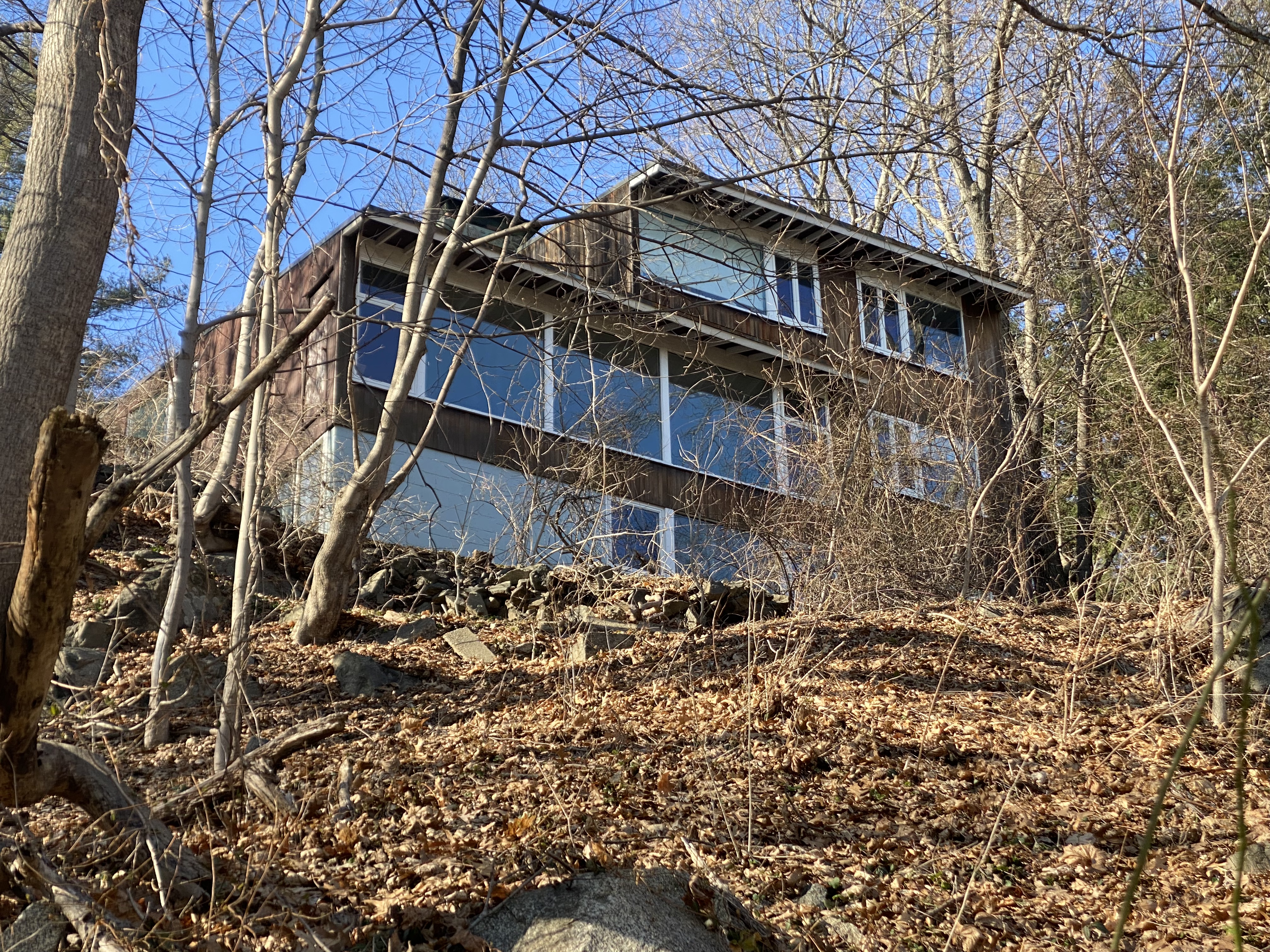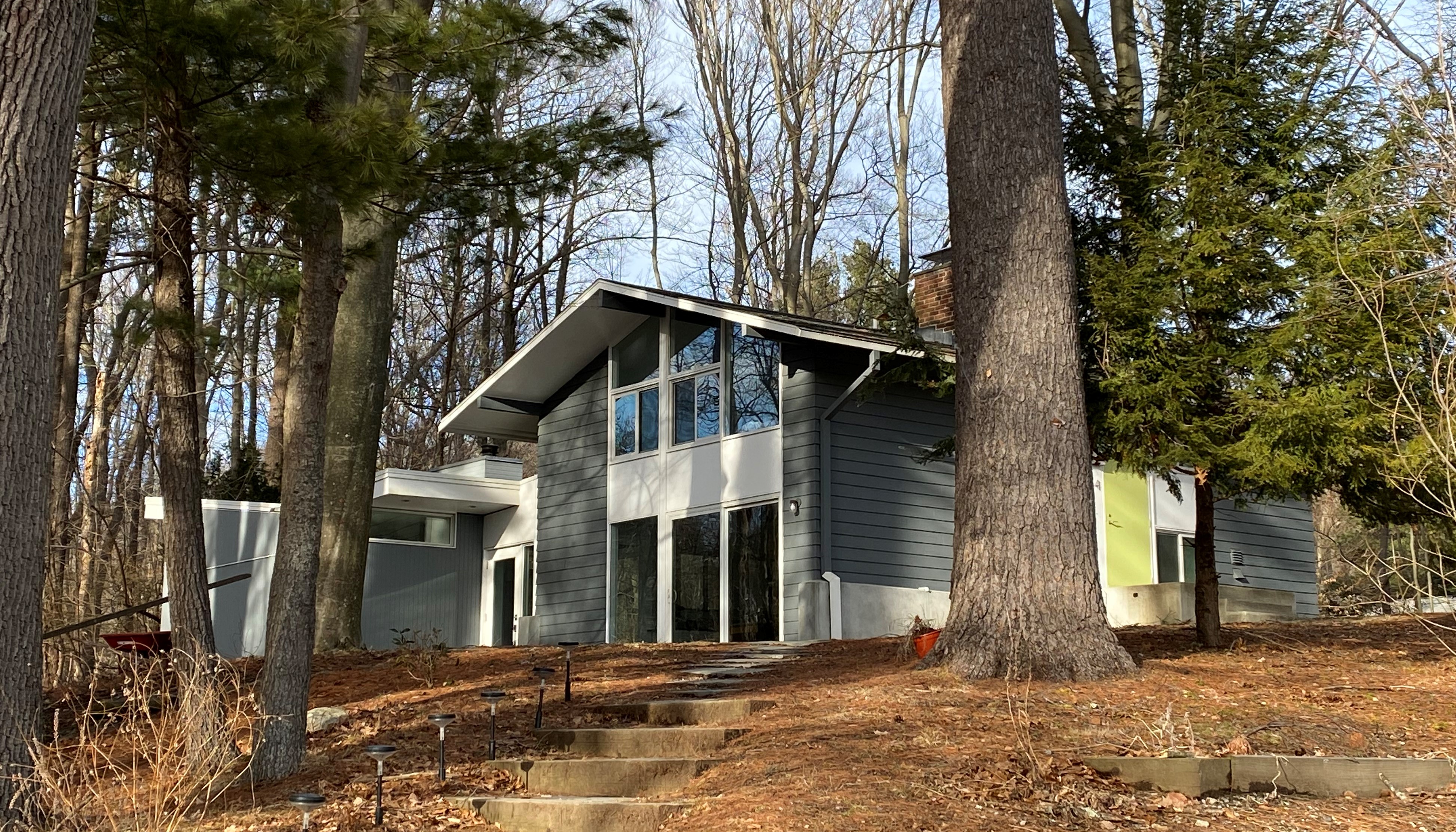Carl Koch (architect) on:
[Wikipedia]
[Google]
[Amazon]
Carl Koch (May 11, 1912 – July 3, 1998) was a noted American 

architect
An architect is a person who plans, designs, and oversees the construction of buildings. To practice architecture means to provide services in connection with the design of buildings and the space within the site surrounding the buildings that h ...
. He was most associated with the design of prefabricated homes and development of the Techcrete building system.


Early life and education
Albert Carl Koch, Jr. was born inMilwaukee, Wisconsin
Milwaukee is the List of cities in Wisconsin, most populous city in the U.S. state of Wisconsin. Located on the western shore of Lake Michigan, it is the List of United States cities by population, 31st-most populous city in the United States ...
, on May 11, 1912. He was educated at Harvard College
Harvard College is the undergraduate education, undergraduate college of Harvard University, a Private university, private Ivy League research university in Cambridge, Massachusetts, United States. Part of the Harvard Faculty of Arts and Scienc ...
and received his Master of Architecture degree from the Harvard University Graduate School of Design (GSD), completing his studies in 1937. The time he spent at Harvard overlapped briefly with the arrival of Walter Gropius
Walter Adolph Georg Gropius (; 18 May 1883 – 5 July 1969) was a German-born American architect and founder of the Bauhaus, Bauhaus School, who is widely regarded as one of the pioneering masters of modernist architecture. He was a founder of ...
, founder of the Bauhaus
The Staatliches Bauhaus (), commonly known as the , was a German art school operational from 1919 to 1933 that combined Decorative arts, crafts and the fine arts.Oxford Dictionary of Art and Artists (Oxford: Oxford University Press, 4th edn., ...
in Germany
Germany, officially the Federal Republic of Germany, is a country in Central Europe. It lies between the Baltic Sea and the North Sea to the north and the Alps to the south. Its sixteen States of Germany, constituent states have a total popu ...
, who had come to lead GSD.
Koch served in the U.S. Navy during World War II. In April 1944, he was recruited for transfer to the Monuments, Fine Arts, and Archives program of the Allied Military Government in the European Theater of Operations, where he served in Germany with other ‘Monuments Men.’
Career
After completing his education, Koch moved toSweden
Sweden, formally the Kingdom of Sweden, is a Nordic countries, Nordic country located on the Scandinavian Peninsula in Northern Europe. It borders Norway to the west and north, and Finland to the east. At , Sweden is the largest Nordic count ...
where he briefly worked for Modernist architect Sven Markelius. After his return to the United States he began teaching at Harvard University and also began work on Snake Hill in 1940, a set of modernist houses including one for himself in Belmont, Massachusetts
Belmont is a town in Middlesex County, Massachusetts, United States. It is a western suburb of Boston and is part of the Greater Boston metropolitan area. As of the 2020 U.S. census, its population was 27,295, an increase of 10.4% from 2010.
H ...
. Focusing on how to address family needs economically, he eliminated all complicated details and expensive millwork. Land costs were low because of a very steep slope and ledge which made construction less attractive for conventional building. Koch's own house was arranged on three levels, the lowest of which was built into the granite ledge, which was left exposed inside the house. The development was hailed as "one of the best known and most significant groups of contemporary houses in the world" in a 1946 article in Progressive Architecture, with photographs by Ezra Stoller. The cost of the house in 1940 was $6,160. Evidence of the design's livability is the fact that the house is largely unmodified 80 years later.
In one of the earliest examples of prefabrication, in 1947 Koch and two associates created the "Acorn House", which was designed to be assembled from parts in one day and then be "demountable" so it could be easily transported to a new location. Although prototypes were built, the design never caught on, possibly due to resistance from local building officials and financers. Koch considered the Acorn House his "one best idea: one that in any reasonable world would have brought comfort to millions." The cost in 1949 was intended to be $4,500 of which all labor costs were supposed to be $350.
After a number of false starts in the design of housing that could be fabricated from parts, he finally met with success with the 1953 "Techbuilt" house. With 90 franchised "builder-dealers" using parts from 4 factories, it is estimated that there were eventually more than 3000 Techbuilt houses in 32 US states. In the Techbuilt house, the post and beam system (which makes interior walls non-loadbearing) combined with a variety of modular exterior wall panels (in 4' and 8' widths) allowing the buyer to easily customize the design.
In his 1958 book ''At Home with Tomorrow'', Koch laid out a philosophy of an "industrial house" that could use prefabrication of parts to design homes that better suited people's needs and could be built quickly and affordably. He questioned the prevailing view that people primarily cared about having their house look like their neighbors'. Although to modern readers some of the gender assumptions about how people live are jarring, the basic ideas about the usefulness of prefabrication and flexible plans still ring true in the 21st century.
Larger Housing Developments
Koch was also a pioneer in cluster housing, initiating, in 1951, the 104-home Conantum inConcord, Massachusetts
Concord () is a town in Middlesex County, Massachusetts, United States. In the 2020 United States census, 2020 census, the town population was 18,491. The United States Census Bureau considers Concord part of Greater Boston. The town center is n ...
one of the first of its kind in New England. In later years, he became involved in large-scale housing projects in Boston and New York associated with the urban renewal
Urban renewal (sometimes called urban regeneration in the United Kingdom and urban redevelopment in the United States) is a program of land redevelopment often used to address real or perceived urban decay. Urban renewal involves the clearing ...
movement. Urban renewal attempted to address what was thought of as urban decay and blight through large scale razing of existing buildings and neighborhoods, replacing them with new highrises. Early on, the implications of this approach came under fire, most persuasively by Jane Jacobs
Jane Isabel Jacobs (''née'' Butzner; 4 May 1916 – 25 April 2006) was an American-Canadian journalist, author, theorist, and activist who influenced urban studies, sociology, and economics. Her book ''The Death and Life of Great American Ci ...
in The Death and Life of Great American Cities
''The Death and Life of Great American Cities'' is a 1961 book by writer and activist Jane Jacobs. The book is a critique of 1950s urban planning policy, which it holds responsible for the urban decay, decline of many city neighborhoods in the U ...
While Koch's innovations were largely technical in nature, one of his projects, Academy Homes in Roxbury, Massachusetts, was the subject of neighborhood demonstrations with residents asking for more community control. Koch believed the goals of technological advancement and citizen involvement could be reconciled. He recommended that neighborhood residents be given a larger role in the Techrete construction process and in planning of the neighborhood itself.
An Early Example of "Adaptive Reuse"
In his project to transform Lewis Wharf into luxury housing, Koch embarked on a dual role of architect and developer. Completed in 1973, his reuse of the beautiful but obsolete 19th century structure predated the better-known redevelopment of historic Faneuil Hall Marketplace by architect Ben Thompson and developer James Rouse in 1976.Projects
*Snake Hill, Massachusetts group of eight houses (1941) *The Acorn House (1946) *Conantum, group of 102 houses, Concord, MA (1951) *Staff housing for the US Embassy, Belgrade (1956) * Turning Mill/Middle Ridge,Lexington, Massachusetts
Lexington is a suburban town in Middlesex County, Massachusetts, United States, located 10 miles (16 km) from Downtown Boston. The population was 34,454 as of the 2020 United States census, 2020 census. The area was originally inhabited by ...
(1956–1967)
*Academy Homes Boston, Massachusetts (1962)
*Eliot House, Mount Holyoke College
Mount Holyoke College is a Private college, private Women's colleges in the United States, women's Liberal arts colleges in the United States, liberal arts college in South Hadley, Massachusetts, United States. It is the oldest member of the h ...
(1962)
*Spruce Hill Road, Weston, Massachusetts (1956)
*Ocean Village/Arverne, for the Urban Development Corporation, New York City (1972)
* Lewis Wharf Boston, Massachusetts (1973)
Publications
* * *Legacy
Carl Koch is known for his successful early designs for prefabricated housing. ''Progressive Architecture'' magazine gave him the unofficial title "The Grandfather of Prefab" in 1994. In total, over 3,000 Techbuilt homes were sold.Awards
* First AwardAmerican Institute of Architects
The American Institute of Architects (AIA) is a professional organization for architects in the United States. It is headquartered in Washington, D.C. AIA offers education, government advocacy, community redevelopment, and public outreach progr ...
(1954)
* Frank P. Brown Pioneer Award of the Benjamin Franklin Institute of Technology (1967)
References
{{DEFAULTSORT:Koch, Carl 20th-century American architects Modernist architects from the United States 1998 deaths 1912 births Harvard Graduate School of Design alumni Architects from Milwaukee